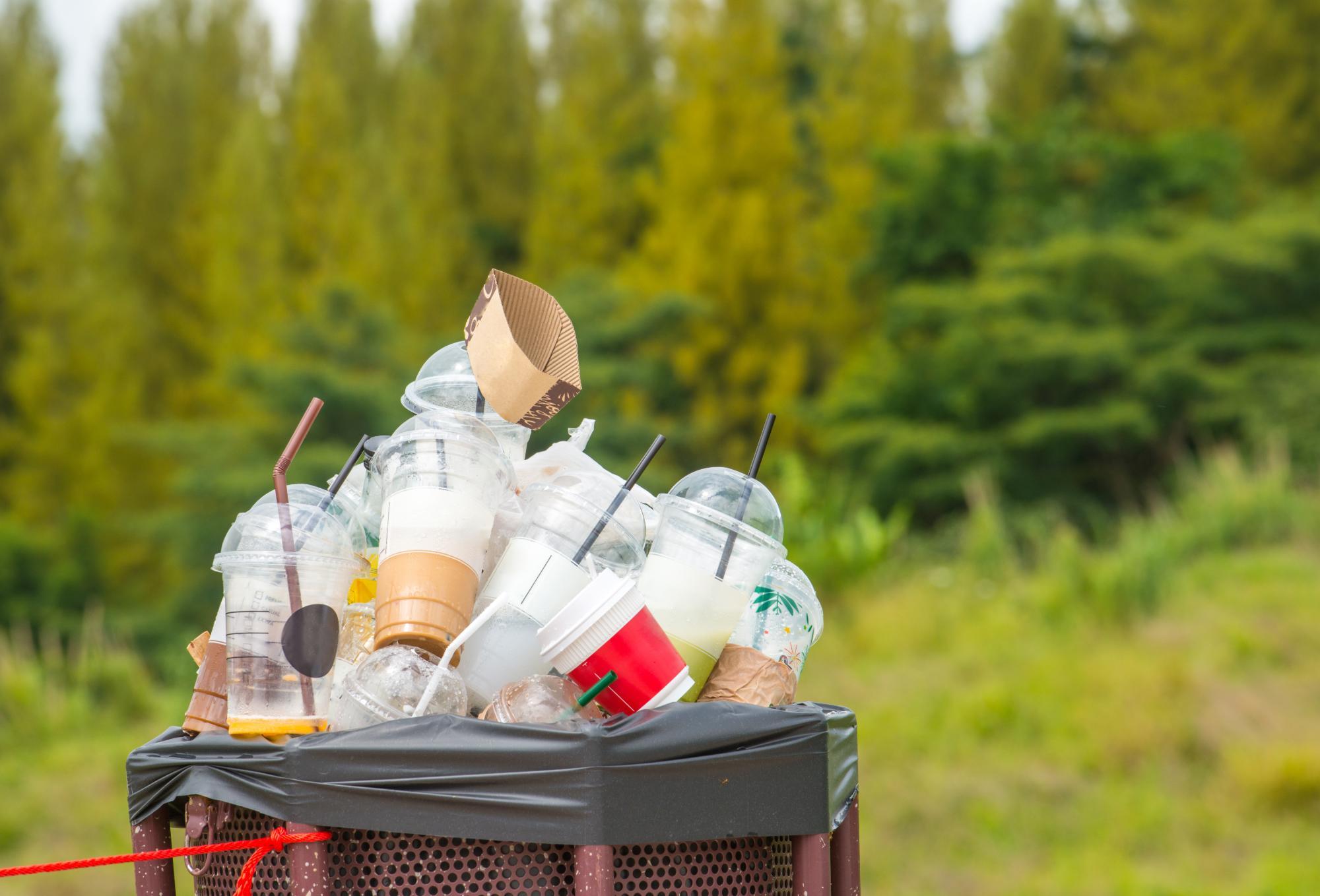
Why Single-Use Plastics Are Bad—And What You Can Do About It
By Mary Wales
Single-use plastics are in the spotlight, as more and more people opt to reduce them. This even includes businesses like Hyatt Hotels and McDonalds in the U.K. and Ireland—as well as Starbucks, whose plan to go plastic-straw-free by 2020 will save one billion straws per year.
Places around the world, like the U.K., Taiwan, Seattle, San Francisco, Montreal and Vancouver, are joining the plastic-free movement. That means reducing straws, cotton swabs, microbeads, and/or plastic bags. And for places like Ireland and Hong Kong, the movement is working. Plastic bag levies have lead to high reductions in plastic bags use. It has dropped as much as 90 per cent in Ireland since the introduction of the levy in 2002. Some cities and counties in the U.S. also have their own plastic bag bans and levies in place.
The data for this disastrous single-use plastics problem paints a shocking picture. According to Global Citizen, plastic production has more than tripled since the '90s. It also shows half the world's plastic was made after 2003. About 150 million tons of plastic—many of it non-degradable—is floating in our oceans, reports the World Economic Forum. You may be aware of the gigantic garbage patch floating between California and Hawaii. It contains an estimated 1.8 trillion pieces of plastics, says Global Citizen.
If this doesn’t sound bad enough already, the problem is getting worse. The Government of Canada reports that, each year, about eight million tons of plastic waste enters our oceans. That is like dumping a garbage truck full of plastic into the ocean every minute. If this continues, plastics could outweigh fish in our oceans by 2050. Unless we take drastic action now, it's expected that the amount of plastic littering the world’s oceans will triple within a decade.
What Are 'Single-Use Plastics?'
Let's take a step back and define ‘single-use plastics’ for a moment. What are they? A 2018 U.N. Environment report on single-use plastics defines them as plastic “items intended to be used only once before they are thrown away or recycled.”Examples of single-use plastic include:
- plastic forks and knives
- plastic shopping bags
- plastic coffee cup lids
- plastic water bottles
- Styrofoam and plastic take out containers
- and, of course, plastic straws
According to the U.N. Environment, the most common single-use plastics found in the environment (in order of magnitude) are:
- cigarette butts
- plastic drinking bottles
- plastic bottle caps
- food wrappers
- plastic grocery bags
- plastic lids
- straws and stirrers
- other types of plastic bags
- foam take-away containers
Why Are Single-Use Plastics Bad?
Single-use plastics may represent the epitome of today’s throwaway culture. The U.N. Environment reports just nine per cent of the world's nine billion tonnes of plastic has been recycled. Most of our plastic ends up in landfills, our oceans and waterways, and the environment. Plastics do not biodegrade. Instead they slowly break down into smaller pieces of plastic called microplastics. Research shows the effects plastic has on the Earth as well as on humans. It can take up to thousands of years for plastic bags and Styrofoam containers to decompose. In the meantime, it contaminates our soil and water. The toxic chemicals used to manufacture plastic gets transferred to animal tissue, eventually entering the human food chain. Styrofoam products are toxic if ingested and can damage nervous systems, lungs and reproductive organs. For many animal species, plastic waste is simply a nightmare. The video of a sea turtle with a plastic straw stuck in its nostril went viral globally; it may have even led to the plastic straw bans. Plastic items like bags and straws choke wildlife and block animals' stomachs. Turtles and dolphins, for example, often mistake plastic bags for food.What Can We Do About It?
The world’s global plastic disaster sounds downright scary, but we can still change our fate. Here are some ideas:- Use cloth or reusable shopping bags instead of plastic bags
- Bring your own coffee mugs, and avoid establishments that don’t offer non-plastic options. Or opt for “for here” options or regular mugs, dishes and cutlery
- Avoid non-recycled plastic bottles and plastic straws
- Support efforts to reduce our dependence on single-use plastics. Examples are plastic bans and levies on shopping bags
- Recycle as much as possible—and support establishments that do the same
- Buy items in bulk to reduce plastic packaging
- Bring your own take-out containers, or support establishments that use recyclable takeout options
- Be informed—get to know what is and isn’t recyclable in your town/city/area
Would you like to be the first to hear about our new products and more? Sign up for our Nature’s Path Newsletter.





